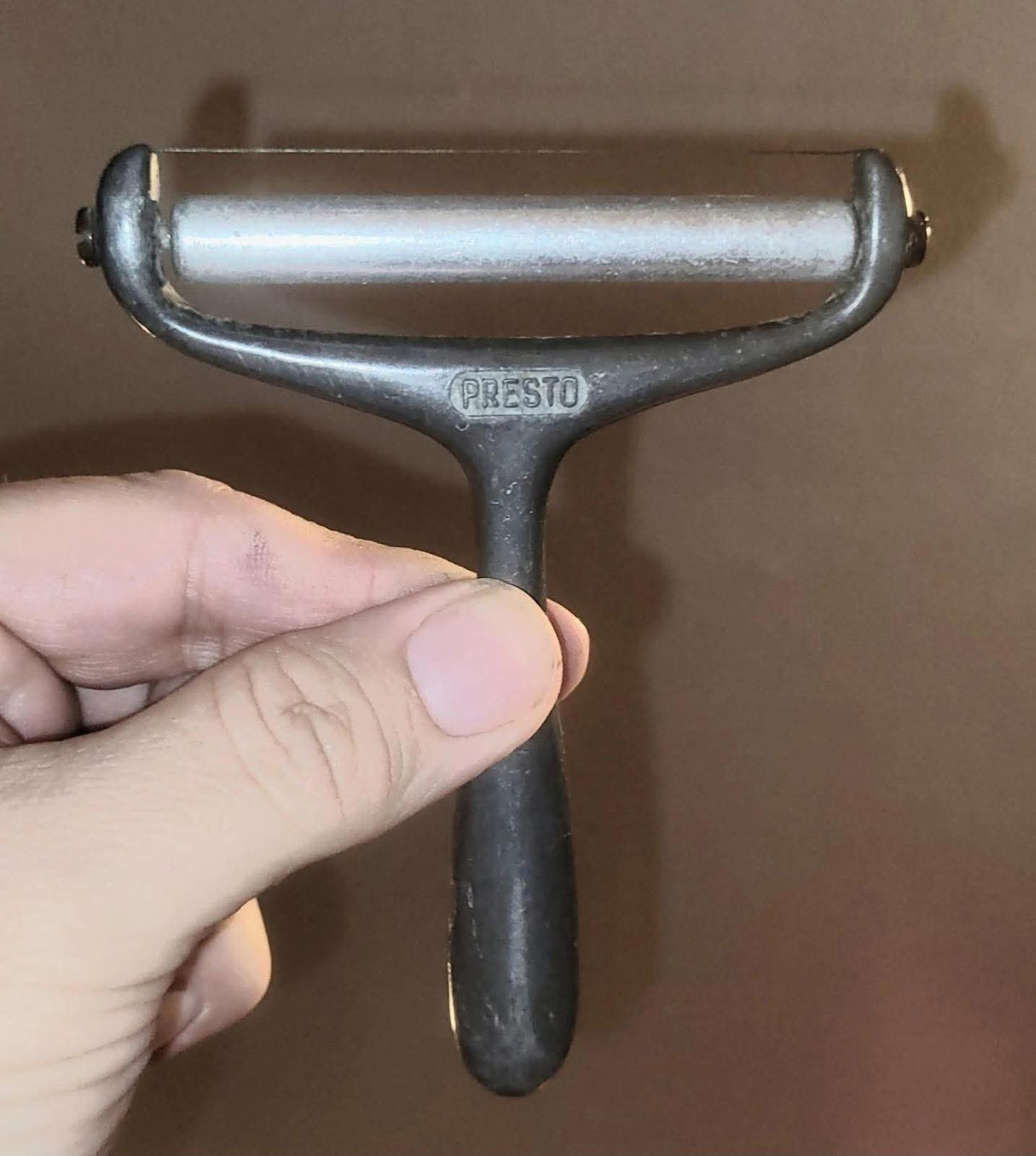
The Forgotten Gadget That Left the Internet Guessing
It’s not every day you stumble upon an object that can stump the majority of the internet, but this little metal tool managed to do exactly that. With its sturdy handle, roller-like top, and the word “PRESTO” stamped in the center, it looked like it could belong in a kitchen, a workshop, or even an artist’s studio.
When photos of it were shared online, the guesses poured in. Some thought it was a cheese slicer. Others were sure it was for woodworking, leathercraft, or even a cleaning brush missing its bristles. The truth, however, is much more interesting — and a bit of a time capsule from the mid-20th century.
What It Really Is
This mystery object is a vintage Presto ice shaver, a hand-held tool that was once a kitchen staple before electric appliances took over. Back in the days before refrigerators had built-in ice makers and crushed ice dispensers, people often bought large blocks of ice. To turn those into usable ice flakes for cocktails, desserts, or snow cones, you needed a device like this.
The design is simple but clever: you grip the handle and run the roller across the surface of a block of ice. The sharp edge shaves off thin curls or flakes, which collect in a bowl or glass. This allowed for refreshing drinks on hot days and delicate ice beds for serving seafood or salads.
Why It’s So Unfamiliar Today
By the 1960s, home freezers and electric ice crushers had made manual ice shavers nearly obsolete. Manufacturers like Presto stopped producing them, and over time, they became forgotten kitchen relics. Today, finding one in good condition is rare — which explains why even seasoned collectors might struggle to identify it.
A Piece of History in Your Hand
Holding one of these vintage tools is like holding a small chapter of culinary history. It represents a time when kitchen gadgets were built to last, made from solid metal, and designed for a single, specialized task. While it may never see daily use again, it’s a fascinating reminder of how food preparation — and the tools we use — have evolved over the decades.
So, next time you find a mysterious item in a thrift store or a relative’s kitchen drawer, take a closer look. You might just be holding a piece of history that can still surprise the world.
